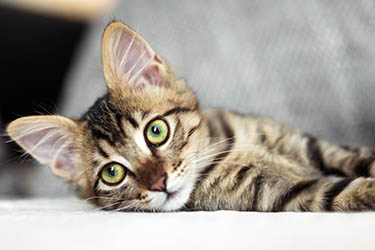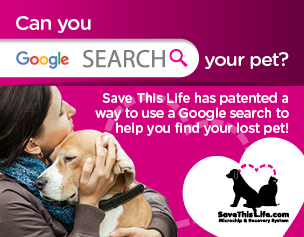Make Your Veterinary Practice Cat-Friendly

Cat clients recognize the importance of routine check-ups and preventive health care for their pets, yet why are so many reluctant about bringing their pet to the veterinary clinic?
One answer? Stress!
Cats are creatures of habit. Changes to their routine, such as when placed in a crate and taken to the vet, may trigger feelings of anxiety or fear. To further exasperate the situation, the way the cat responds may also cause its owner to stress. Fortunately, there are ways to help.
Creating a Cat-Friendly Environment
Clinics that offer services in a cat-friendly environment can help to remove some of the stress experienced by the animal, the client, and even the staff. By taking advantage of feline-friendly methods of operation, the veterinary visit can focus more on treatment and less on working with an aggravated or fearful patient.
The following offers helpful information to improve the veterinary experience of feline patients.
Client Suggestions
When setting up an appointment, staff should ask clients if they have ever observed any changes to their cat’s behavior that could be associated with a trip to the vet. If yes, offer the following suggestions:
Withhold Food
If medically appropriate, withhold the animal’s food for several hours before the appointment. An animal that is hungry usually responds better to fear-free techniques that involve food motivation.
Leave the Carrier Out at Home
Cats should always be contained when traveling, but they may learn to associate their carrier with stress if their only contact with it is when they are placed inside.
To combat against a negative reaction each time the cat is placed within the carrier, suggest that clients leave the carrier out in the room so the animal can become accustomed to its sight and smell. Helpful ways to do this include using it as a place to:
- Provide a relaxing and comfortable place to rest
- Feed special treats
- Play with favorite toys.
Reassurance
If an animal reacts fearfully because it has learned to associate the carrier and the trip to the vet with pain and/or illness, provide clients with the option to bring the animal to the clinic between appointments. The cat may be able to lose some of these learned negative feelings when it receives positive attention from staff through petting and treats.
Staff Awareness
The clinic can cause a cat to become overstimulated by its many different sights, sounds, lights, and scents. Some of this stress can be eliminated by adapting different scheduling procedures and by modifying the waiting area to meet the animal’s needs. For example:
- Schedule the appointment to create a minimal amount of waiting time before the examination begins
- Arrange for one day or a portion of a day to be reserved for cat-only appointments
- Try to offer a quiet environment for the waiting area
- Provide an examination room designated only for cats
- Modify the seating in the waiting area so cat patients can be away from dogs
- Request that all cats be contained within a carrier and all dogs be kept on a leash.
Once the cat is in the examination room, there are several things staff members can do to help, such as:
- Talk quietly to the animal in a calm, soothing voice until it relaxes
- If appropriate, offer food treats during the examination
- Rub the cat’s ears or scratch it on the head to help the animal to calm down
- Learn different handling or restraint methods, such as:
- Scruff them by the neck similar to the way their mother carried them
- Scruff, and then tap them lightly on the head to distract them
- Wrap the cat in a towel
- Use something soft to bind the front legs together, secure the rear legs above the hocks, and then cover the animal’s head with a light cloth.
A very frightened cat should be left alone until it has relaxed. Some cats can be calmed down by the offer of a little food, and by being talked to quietly.
If the animal remains too stressed to work with, you may provide clients with products designed to help it to calm down. These products may be given to the animal prior to leaving home or at the start of the appointment.
A clinic that works to reduce patient fear helps to improve the quality of care for the animal, as well as builds a stronger work relationship with its owner.
Sources
https://www.avma.org/KB/Resources/Reference/AnimalWelfare/Pages/AVMA-Welfare-Focus-Featured-Article-May-2012.aspx
http://www.wikihow.com/Hold-a-Cat-by-the-Scruff


Working Here
Our team members are encouraged to be the best they can be... at Covetrus we believe we impact one another.
Learn MoreNews & Events
FDA Cautions Pet Owners Not to Feed Texas Tripe Inc. Raw Pet Food Due to Salmonella, Listeria Monocytogenes
The U.S. Food and Drug Administration is cautioning pet owners not to feed their pets any of the Texas Tripe brand raw frozen pet food listed below because several samples of Texas Tripe raw pet food have tested positive for Salmonella and/or L. mono.
Careers
Are you looking for a place to let your talents shine? At Covetrus, we help our practitioner customers better serve their patients and take pride in providing the best customer experience possible. Search our open positions to see our available opportunities.
Newsletter
Stay current with what’s going on with Covetrus, subscribe to receive our newsletter and email communications. Subscribers will receive the latest information in practice management, sales and marketing, animal health, and more.



-3-(1).png?sfvrsn=2d806d73_0)

Leave a comment